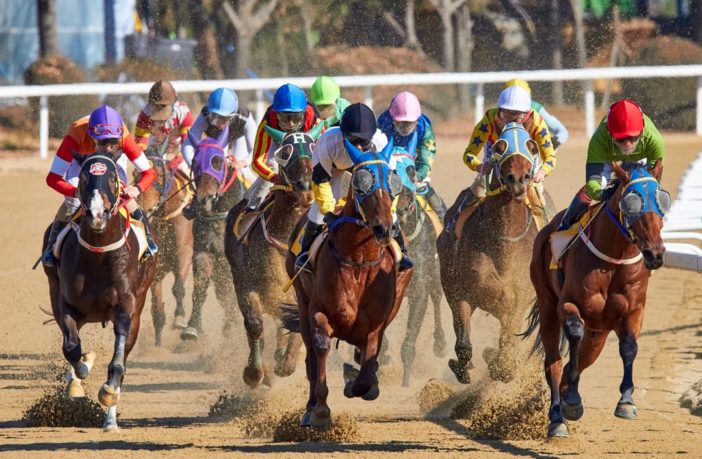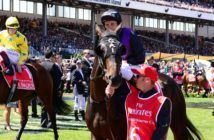Sports betting is unlike any other form of gambling, and the horse track is one of the most popular venues.
A day at the track has the potential to win you some cash, but only if you know what you’re doing. Before you go off to the races, check out the top 10 horse race betting tips for beginners.
A day at the horse track is great for the sun, fun, and friends. It’s a great way to spend the day watching live racehorses from the stands. But the main reason that horse racing exists is to gamble.
Horse race betting is unique, in that your wager is on the abilities of an individual animal. Unlike any game in the casino, betting on horses involves scrupulous inspection and research on the horses, trainers, and more.
In this article, you learn what to look for in a winning racehorse, and how to bet on a horse at the track. Find out how to turn your day at the track into a lucrative pastime.
Your Invitation to the Best Online Pokies in Australia
Like a punt on the slot machines?
Our top rated slots for October 2019 are the smash-hit online pokie sites: Ruby Fortune and Jackpot City Casino.
These sites include some impressive matched bonuses – up to $750 and $1600 respectively! With the potential for some seriously big wins, here’s your chance to get a piece of the action:
Top 10 Horse Race Betting Tips for Beginners
Horse race betting is the third most popular form of sports betting in the world. More than 60 percent of horserace betting is done from online betting sites, but nothing beats being at the track for the real thing.
Your first trip to the horse track is an unforgettable one, no matter if you win or not. But knowing how the system works makes your experience that much more enjoyable.
At the ticketing gate, you can buy a program for the days’ races. It provides important information on the horses in each race, their odds, and race history. It also provides information on trainers, lineage, and professional picks.
When you walk into the lobby, you will see cashiers and betting booths. The booths are usually electronic, and let you place your bets for upcoming races. You cash out winning tickets at the same machines.
Betting System and Terms
Horse tracks operate by different systems of betting, depending on what country you are in. The two most popular forms of betting are fixed odds and tote. The forms of individual bets are uniform at most racetracks across the globe.
1. Fixed Odds Betting
The most common form of horse race betting is a fixed odds system. A fixed odds betting system uses predetermined odds for each horse on which to base your wager. If your horse wins with five to one odds, you win five times your initial bet.
A fixed odds system can also use a starting price. A starting price means that the odds are calculated until the start of the race. So, if you make your bet early, the odds on your horse can change by the time the race starts.
2. Pari-mutual Betting
Another popular betting system is pari-mutual or tote betting. This system calculates your winnings on the total amount in the betting pool. If the betting pool is large on a winning horse, the payouts are larger to the winners.
If your initial bet is small, your payout will be smaller in proportion to the larger bets. The downside of tote betting is that you are not able to predict your potential winnings until the race starts.
3. Win, Place, Show, and Across the Board
When you hear someone say, “$50 on Seabiscuit to win,” it means they bet $50 that Seabiscuit will finish the race in first place.
Betting on a horse to place, means you bet that the horse will finish, either, first or second place. Placing a bet on a horse to show, means you wager the horse will finish in first, second, or third place.
Across the board, is a combination of win, show, and place betting. An Across the Board bet has a predetermined payout scale. If your horse finishes in second place on an Across the Board bet, you get two-thirds of the total winning amount.
4. Turf and Dirt Track
A horse runs on, either, a turf racetrack or a dirt racetrack. The attributes that make a winning racehorse are different for track horses than for turf horses. Knowing the differences in turf and dirt tracks helps you know what to look for in a winning horse.
A horse that is bred for turf looks sloppy walking across the dirt track-and visa verse. Horses that run better on an off track than a fast track will race better on turf. An off-track is a muddy, sloppy, or wet dirt track.
5. Review a Horses Recent Workouts
Horse race betting is nothing like roulette gambling. The winning bet is the most well informed. Very few elements of the race are left to chance.
The long-term training of a horse is important to determine which contenders have the upper hand. But it is also important to consider the most recent workouts that the horse has undergone. How well the horse does on recent workouts is the most relevant indication of its current racing ability.
A horse that is favored to win often will be shown up by a horse with more recent and relevant workouts.
6. Consider the Pedigree
The Father and Mother of a racehorse are called the Sire and Dam. A strong racehorse comes from a Sire and Dam that have produced winning racehorses. Horse experts agree that the majority of breeding characteristics come from the Dam, rather than the Sire.
Pedigree, recent workouts, and other horse information are in your race program. Familiarize yourself with the upcoming races horses before you go to the stables. The stables are where you observe the trainers and horses for the upcoming race.
7. Assess the Bones
When you asses the horse visually, start with its bone structure. Is the scull proportional to the body? Big bones are a good thing in a racehorse.
Look at the horse from the front. The legs should travel in a straight line from the chest to the hoof. Also, look for a wide ribcage between the top of the horse’s legs and its chest.
Look at the horse from the side, and look for the knee slightly over the hoof. The horses’ feet should point straight ahead, instead of pigeon toeing in or out.
8. Asses the Muscle Tone and Coat
On top of the bones sit the horse’s muscles. A racehorse must have fit and healthy muscles to support the stress placed on its legs. A good sprinting horse is one with strong back legs.
The back legs are the most important aspect of the horses running power. Look for definition across the shoulders, back, and legs.
Forearm strength is not an indicator of a winning horse like back leg strength is. But, a horse with strong forearm and back legs has more power and speed. A sprinter, however, does not need strong forearms and can win a race in the final meters.
The coat of a healthy horse shines in the light. A nice shiny coat is an indication of the horses overall fitness and wellbeing.
9. Look for Physical Balance
Physical balance and symmetry are crucial for a winning racehorse. The horse should be of an equal length between its neck, back, and hip. The size of a horse determines the proportionality to look for.
Horses can take up to five years to fully grow into their body. Beware of horses with larger quarters than their front legs.
10. Observe the Horses Manner
The final thing to look for in a winning horse is one with the spirit of a champion. The mannerism of a horse can tell you a lot about how they will perform in an upcoming race. The more feisty the horse, the more competitive it is.
Energetic horses, however, do not always make winners. A horse that is rambunctious wastes its energy before the race begins. Look for a horse with an alert, even temperament.
A calm, attentive horse is a good sign that it is well trained for racing.
Other Factors to Note
The size of a horses features and appendages matters in the same way that it does for an athlete. A horse with large nostrils and a robust jaw can intake oxygen more readily. Bright eyes are a good signifier that the horse is attentive and alert.
In horse race betting, the horse with the most drive and best physical condition is the best bet.
Final Thoughts
When you observe the racehorses before a race, pay attention to which end of the horse seems more active-front legs or back legs.
If the horse is rearing its hind legs and trying to kick, this is an indication that the horse feels defensive and scared. Raising the front legs indicates that the horse is trusting and attentive.
A horse that is afraid or agitated has already expended energy that the calm horse is saving for the race. When it comes to horse race betting, your best bet is on horses with low odds and a calm manner.
If you like this article on horse race betting share it with friends on social media. And subscribe to the newsletter for more articles on Australian gambling. Thanks for reading!





